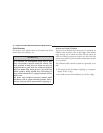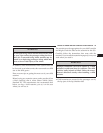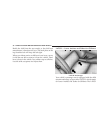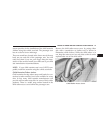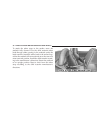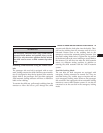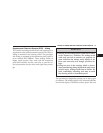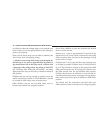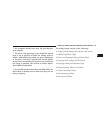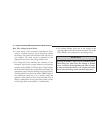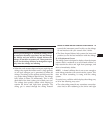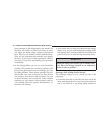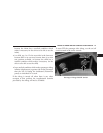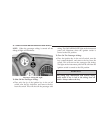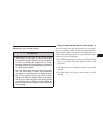
in collisions where the airbags deploy, you need the seat
belts to keep you in the right position for the airbags to
protect you properly.
Here are four simple steps you can take to minimize the
risk of harm from a deploying airbag.
1. Infants in rear facing child safety seats designed for
children up to one year or approximately 20 pounds (9
kg) should never ride in the front seat of a vehicle with
a passenger side airbag unless the airbag is shut OFF.
See “Passenger Side Airbag On/Off Switch.” An airbag
deployment can cause severe injury or death to infants in
this position.
Children that are not big enough to properly wear the
vehicle seat belt (see section on “Child Restraint”) should
be secured in child safety seats or booster seats.
Older children who do not use child safety seats or
booster seats should ride properly buckled.
Never allow children to place the shoulder belt behind
them or under the arm.
Infants up to 1 year or approximately 20 pounds (9 kg)
should never ride in the vehicle, because the rear facing
child seat places them too close to the passenger air bag
in the event of a crash.
Children from 1 to 12 years old: Move the passenger seat
as far back as possible. Children from 20 to 60 pounds (9
kg to 27 kg) should be secured in the appropriate child
safety seat or booster seat. If too large for a booster seat,
the child should wear the lap/shoulder belt properly.
Children should never be allowed to lean forward to-
ward the instrument panel as a passenger air bag deploy-
ment could cause severe injury or death to a child in this
position.
You should read the instructions provided with your
child restraint to make sure that you are using it properly.
42 THINGS TO KNOW BEFORE STARTING YOUR VEHICLE



